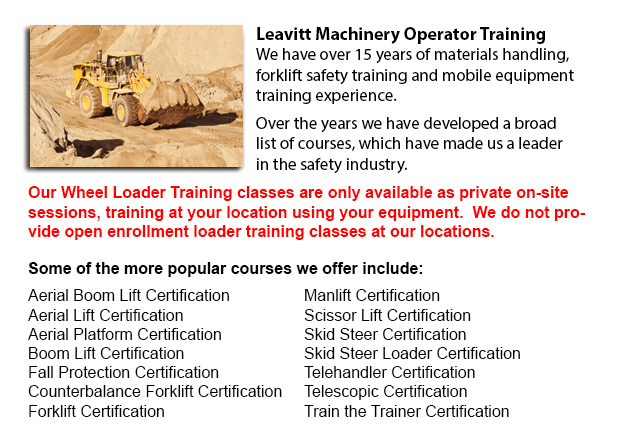
Lift trucks are obtainable in various load capacities and different models. Most lift trucks in a regular warehouse setting have load capacities between one to five tons. Bigger scale units are utilized for heavier loads, like for example loading shipping containers, may have up to fifty tons lift capacity.
The operator can utilize a control in order to lower and raise the forks, that are also referred to as "forks or tines." The operator could also tilt the mast in order to compensate for a heavy load's propensity to angle the blades downward to the ground. Tilt provides an ability to work on bumpy surface as well. There are yearly contests for skillful lift truck operators to compete in timed challenges as well as obstacle courses at local lift truck rodeo events.
General operations
All forklifts are rated for safety. There is a specific load limit and a specified forward center of gravity. This essential information is provided by the maker and situated on the nameplate. It is important cargo do not go over these specifications. It is prohibited in numerous jurisdictions to tamper with or remove the nameplate without getting permission from the forklift maker.
Nearly all lift trucks have rear-wheel steering in order to increase maneuverability. This is very effective within confined spaces and tight cornering spaces. This kind of steering varies rather a little from a driver's first experience together with different vehicles. In view of the fact that there is no caster action while steering, it is no essential to apply steering force so as to maintain a constant rate of turn.
One more unique characteristic common with forklift use is unsteadiness. A constant change in center of gravity takes place between the load and the lift truck and they should be considered a unit during utilization. A forklift with a raised load has gravitational and centrifugal forces that may converge to cause a disastrous tipping mishap. In order to avoid this from happening, a lift truck must never negotiate a turn at speed with its load raised.
Lift trucks are carefully designed with a load limit used for the blades. This limit is decreased with undercutting of the load, which means the load does not butt against the fork "L," and also lowers with tine elevation. Generally, a loading plate to consult for loading reference is positioned on the lift truck. It is unsafe to use a forklift as a worker lift without first fitting it with certain safety tools such as a "cherry picker" or "cage."
Forklift use in warehouse and distribution centers
Important for any distribution center or warehouse, the lift truck should have a safe environment in which to accommodate their efficient and safe movement. With Drive-In/Drive-Thru Racking, a forklift must go within a storage bay which is many pallet positions deep to set down or obtain a pallet. Operators are often guided into the bay through rails on the floor and the pallet is placed on cantilevered arms or rails. These confined manoeuvres need well-trained operators in order to do the job safely and efficiently. Since every pallet requires the truck to go in the storage structure, damage done here is more frequent than with different types of storage. If designing a drive-in system, considering the dimensions of the tine truck, along with overall width and mast width, need to be well thought out to ensure all aspects of an effective and safe storage facility.
-
Brampton Aerial Boom Lift Ticket
Brampton Aerial Boom Lift Ticket - Aerial lift trucks might be used to accomplish several different tasks executed in hard to reach aerial places. Many of the tasks associated with this style of jack include performing routine maintenance on building... More -
Brampton Aerial Lift Train the Trainer
Brampton Aerial Lift Train the Trainer - The Aerial Lifts Train the Trainer Certification Program would teach trainers how to efficiently train operators in safe industrial mobile equipment operation. Trainers are provided with in-depth instruction o... More -
Brampton Zoom Boom Training
Brampton Zoom Boom Training - Zoom Boom Training is intended to train operators on variable reach forklifts. The goals of the training are to be able to impart an understanding of the physics of the machinery, and to be able to outline the operator's... More -
Brampton Heavy Equipment Operator Training
Brampton Heavy Equipment Operator Training - Heavy equipment operator training facilities that provide good standards within the industry, providing field performance work and additional machinery training are really sought after training features. S... More -
Narrow Aisle Forklift / Order Picker Training / Electric Pallet Jack / Electric Pallet Truck Training in Brampton
A pallet haul is equipment built in particular for moving pallets of irregular weights and dimensions. They may be used in conjunction with cranes, forklifts and other heavy duty equipment as an appendage piece or to be employed on their own. Pallet... More -
Brampton Overhead Crane Safety Training
Brampton Overhead Crane Safety Training - Overhead crane safety training equips operators with knowledge and skills regarding crane safety measures, accident avoidance, materials handling, and equipment and stock protection. Trainees will learn the k... More -
Brampton Crane Safety Training
Brampton Crane Safety Training - Companies and crane drivers have to know the problems associated to crane safety. Legislation provides rules for the safe maintenance, operation and inspection of lifting machines across North America. Crane Safety co... More -
Brampton Telehandler Training
Brampton Telehandler Training - Telescopic handlers normally known as telehandlers for short, are a really popular piece of heavy construction machinery. They are usually utilized in the construction and agricultural trades. These machines have farth... More

Forklift Certification Brampton
TOLL FREE: 1-888-254-6157
Brampton, Ontario
forkliftcertificationbrampton.com
Email Us
About Us


